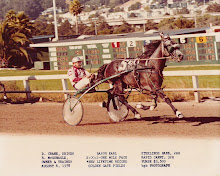Story of Fakes Gets New Chapter in China
By F. Michael Fazzari
Our hobby is under attack in a way that calls for some drastic changes in order to protect the marketplace from a new plague of deceptive counterfeits. In two columns, I'll trace earlier generations of bogus coins, explore some of the new fakes from China and suggest some possible ways to remedy the problem of these counterfeits.
Counterfeiting is probably older than the first coins; while alterations made to items considered as money may have preceded that. Nevertheless, let's begin well after this period and consider the era of struck coinage. One common form of alteration was "clipping" where small amounts of metal were cut from the edges of coins. This led governments to add various edge ornamentation to coins in order that someone could see the piece was intact and of full weight.
Eventually, entire coins were faked such as the contemporary counterfeit English pennies and American Bust halves that are eagerly collected today. In most cases, the style of the design used on these fakes and others left much to be desired. However, we know that these fakes were deceptive enough to circulate as they are usually found only in worn condition. Collectors of ancient coins must deal with much more dangerous and artful counterfeits than these.
While the counterfeit Machin's Mill coinage that plagued the Colonies might be an exception in terms of output, for much of the past, counterfeit operations were largely small and confined to contemporary circulating coinage. An engraver or "small time" crook could produce very limited quantities of one-off pieces similar to some of the famous varieties of large cents that bear no relationship to any government design or the Pioneer Era trial pieces that turn up now and then with a good pedigree.
When a government got into the act of fakery in order to debase the currency of another country, with few exceptions that I know of, their attention was on paper currency. However, coins such as British Trade dollars and gold sovereigns were counterfeited on a large scale, probably with government backing.
I don't believe numismatists had much of a problem with fakes until coins became valuable as collectibles. I can certainly speak to the 1960s and up to now with authority. Since coins have become more valuable, alterations have gone from a garage setting using a hot plate and battery to almost undetectable specimens with added mintmarks, tooled designs, and repairs that have taken on a quality once reserved for Old World master craftsmen!
As with coin alterations, counterfeits have improved over time. The improvements usually occur in distinct stages. For example, in the 1960s we had a glut of gold coins from Lebanon made using actual coining presses. These fakes were of such poor quality that many experts at the time wrote that they were made by casting. Although these fakes were not of numismatic quality, soon the next batch of fairly deceptive Liberty and Indian quarter eagles came out. While their style and relief was better and thus more deceptive, this generation of fakes was made using the wrong alloy of gold. Thus, these fakes were off-color.
The next leap forward was heralded by the "Omega" High Relief double eagle, and deceptive $1 and $3 gold coins. At the time, the sharpness and amount of detail on these coins was astounding. That's the reason, for a short time, so many professional numismatists disputed the fact that these coins were counterfeit. Fortunately, defects on the transfer dies made these fakes easy to detect once the professional authenticators revealed them and began to share the diagnostic information they had discovered.
Counterfeits have continued to improve as the fakers moved on to common date $20 Liberty and Saint-Gaudens designs and the gold and silver commemorative series. I believe some of the counterfeit silver commemoratives exemplified their best work and I am writing about fakes that were made almost 20 years ago.
Recently, with the advent of the Chinese connection, the counterfeiters have made another big step in the quality of their product. Most of you have probably read about the fake numismatic items produced by a Chinese businessman. Whether government backed or truly just a private enterprise, his work can be quite deceptive especially to the average collector. It's also a good bet that there are many such businesses there and I suspect that some of them are producing a much better product than those being reported so openly.
Finally, let's not forget the counterfeit slabs that have appeared. What a novel idea to attack the very system that was put in place to protect us from fakes and overgraded coins. You must know that it takes a large initial investment to make the plastic parts used to produce a third-party grading service's slab.
Here in the States, I believe the tooling for a case die alone can cost over $20,000. Then you'll need to add the labels, inserts, and sonic sealing machine dies. Perhaps, in an effort to keep their cost down, the fakers concentrated on one size coin (dollars are popular) and are working abroad as is being done in China today. Fortunately, from what I've seen, the counterfeit slabs are more dangerous and are better copies than the coins inside them; but that is changing.

